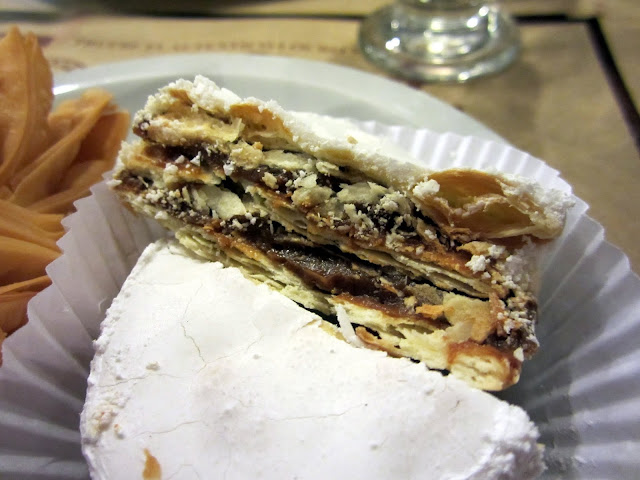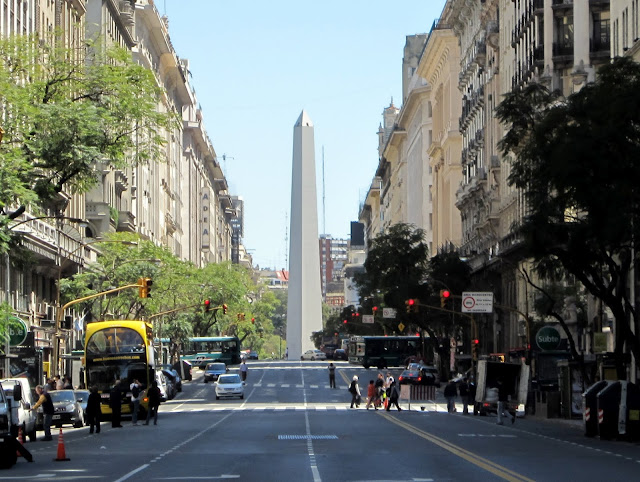This little cafe in Villa Crespo is a great place for brunch, offering both quick snack at the pastry case or a more formal sit down meal. We were there for brunch where the varied offered up something for everyone in our party: BBQ short ribs for one person, granola and honey for another, and pancakes for me personally.
Our next delicious stop was at El Sanjuanino (Avenida Callao 1515), which focuses on the humble empanada. This restaurant has been offering up traditional Argentine style empanadas, tamales, and my favorite, alfajores, for more than 50 years. This is a great place for lunch and is always buzzing with people. Their empanadas are moist, flavorful, and have a flaky crust that delicately pulls apart with a whisp of steam. These things are excellent, and their sangria comes in a huge, cheap pitcher.
Alfajores are my favorite treat from South America and we had plenty of opportunity to try them while we were there. Another treat that we enjoyed while there was gelato: Along with the Italians came the Italian tradition of their frozen desserts. The most famous gelato shop, Helados A.M Scannapieco, was on our list of places to visit, but the location at Av Córdoba 4826 is closed. There is a very nice plaque there explaining that the random store there was the original location of famed shop. The business continues on, but at a different location (5274 Avenida Nazca), but as a warning to any would be gelato lovers... there is nothing at the 4826 address.
Thankfully, there are plenty of other places that offer the same frozen treat. The best that we had while we were there was at Nonna Bianca, but the San Telmo market. Everything is hand made and there is a wall full of flavors to choose from, including about 10 different types of Dulce de Leche. What exactly is the difference between Dulce de Leche, Super Dulce de Leche, and Extra Dulce de Leche? Maybe the locals know.
The flavors were great, including a very rich and smooth melon that I ended up devouring before I could get my camera out. At another shop in Palermo, I had a bit better luck (see below).
Next time? Even more food, including a non-kosher McDonald's.












































